Tag: ultrasound
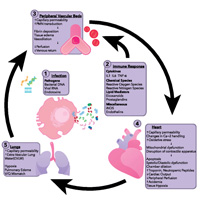
Pathophysiology, echocardiographic evaluation, biomarker findings, and prognostic implications of septic cardiomyopathy
As a result of conflicting data, echocardiographic measures of left ventricular (systolic or diastolic) or right ventricular function cannot currently provide reliable prognostic information in patients with sepsis. Natriuretic... read more
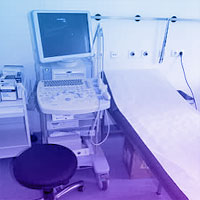
The Importance of Skeletal Muscle Ultrasound in Critical Care
With growing interest in understanding muscle atrophy and function in critically ill patients and survivors, ultrasound is emerging as a potentially powerful tool for skeletal muscle quantification. However, there are key... read more

Extravascular Lung Water as a Target for Intensive Care
Extravascular lung water (EVLW) remains a useful guide for monitoring pulmonary edema (PO) and vascular permeability in sepsis, acute respiratory distress syndrome (ARDS), and heart failure. In addition, EVLW has a prognostic... read more

Time to Add a Fifth Pillar to Bedside Physical Examination
Inspection, palpation, percussion, and auscultation have been the 4 pillars of clinical bedside medicine. Although these basic methods of physical examination have served us well, traditional bedside examination, for a number... read more

Ultrasound-guided Pleural Effusion Drainage With a Small Catheter Using the Single-step Trocar or Modified Seldinger Technique
Ultrasound-guided pleural effusion drainage by catheter insertion is a safe and effective procedure. The success rate is low when the effusion is loculated and septated. Both the trocar and the modified Seldinger techniques... read more
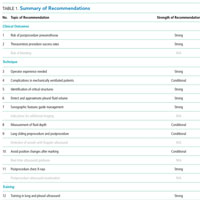
Recommendations on the Use of Ultrasound Guidance for Adult Thoracentesis
The use of ultrasound guidance for thoracentesis has been associated with increased success rates and decreased complication rates. Ultrasound can be used to estimate the pleural fluid volume, characterize the effusion as... read more

Trick of the Trade: Bubble Study for Confirmation of Central Line Placement
The safe placement a central venous catheter (CVC) remains an important part of caring for critically ill patients. Over 5 million CVCs are placed each year in the United States. It is crucial to confirm that the central... read more
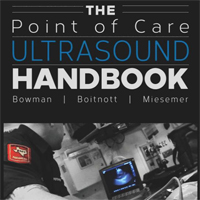
The Point of Care Ultrasound Handbook
This NEW book is meant to be a reference for both the new and experienced point of care sonographer; to be a pocket guide to carry with you during your shift. We have included our best tips, tricks and any additional information... read more
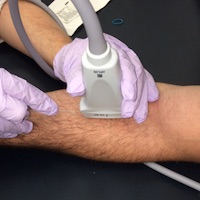
Ultrasound-Guided Peripheral Intravenous Access
Obtaining intravenous (IV) access is a basic necessity in the emergency department. So what do you do when you are unable to place a peripheral IV, and your go-to external jugular line is not an option? You certainly do not... read more
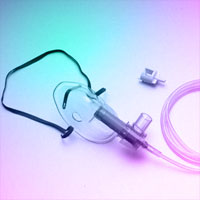
Bedside Ultrasound Assessment of Lung Reaeration in Patients With Blunt Thoracic Injury Receiving High-Flow Nasal Cannula Oxygen Therapy
High-flow nasal cannula oxygen therapy may be considered as an initial respiratory therapy for trauma patients with blunt chest injury. High-flow nasal cannula therapy could improve lung aeration as noted by the transthoracic... read more
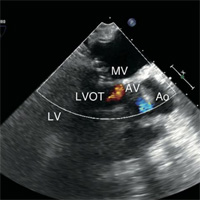
Transient Systolic Anterior Motion with Junctional Rhythm After Mitral Valve Repair in the ICU
This case report shows that junctional rhythm can cause deterioration of SAM, LVOTO, and MR, and can lead to unstable hemodynamics in a patient with right ventricular failure after MVR. Atrial pacing can resolve SAM, LVOTO,... read more
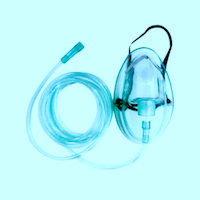
Assessment of the adequacy of oxygen delivery
In this article, we review physiologic principles of global oxygen delivery, and discuss the bedside approach to assessing the adequacy of oxygen delivery in critically ill patients. Although there have been technological... read more
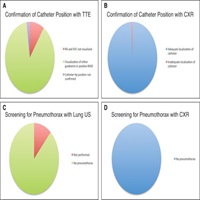
Ultrasound as a Screening Tool for Central Venous Catheter Positioning and Exclusion of Pneumothorax
Although real-time ultrasound guidance during central venous catheter insertion has become a standard of care, postinsertion chest radiograph remains the gold standard to confirm central venous catheter tip position and rule... read more

Chest Radiography vs. Lung Ultrasound for Identification of ARDS
For the identification of acute respiratory distress syndrome (ARDS) using the Berlin definition, both chest radiography and lung ultrasound were equally related to mortality. The Berlin definition using lung ultrasound helped... read more








